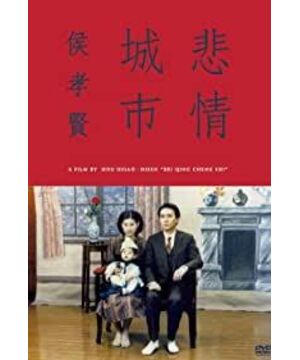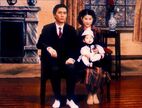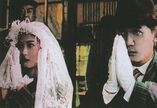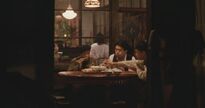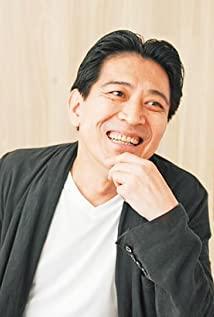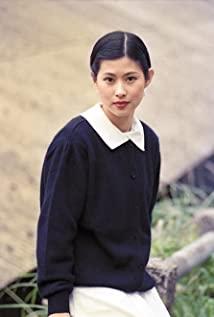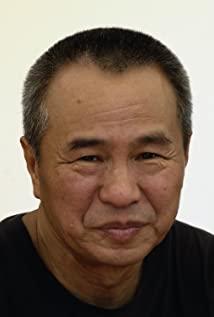"Sakura of the same luck / Go even if it is flying / I will come later / Everyone is the same"
- the inscription
In the limited time and space, we can't experience everything. Through historical records, movies, literature, etc., we have seen all kinds of things in this vast world that we may not have known before.
Taiwanese director Hou Hsiao-hsien used his film and television work "Sad City" to tell the world the story of the Lin family in the background. Because of the sensitive historical background, the film was banned for a while. I thought Hou Hsiao-hsien didn't want to complain to the society, he just wanted to tell people a story composed of real fragments, so as to express his feelings for the Southern Kingdom, his memories of that period of history, and to let the bloody history Sublimated in the movie. He is a person from that era, and he empathizes with it.
The name of the film is "Sorrowful City". Sadness is an atmosphere. The city refers to Keelung Port, where the Lin family lives, or the island of Taiwan. The beginning of the film is the scene of Lin's son's concubine giving birth, the old house, the dim lights, the day when Japan evacuated Taiwan. The end of the film is still the old house of the Lin family, but the old situation is no longer there. Under the dim light, the people who were left ate silently. At that time, it was the period when the Nationalist government was defeated. Combined with the historical background, the whole story happened in just four years, but is it only these four years? Taiwanese who have experienced it personally will not forget what happened four years ago, and after four years, there are still longer days waiting. Even if people in the future don't know or care about this history, history is history after all, it really happened, and the blood it left behind will continue to flow. As the poem says: "After the soul is quiet / the blood will flow for many years".
Therefore, sadness is inevitable. It was so four years ago, it was so between four years, it was so four years later, and it was so for many more years to come. The sadness continued until that unknown era, perhaps it would be diluted by the long river of time.
I think there are two kinds of tragedies, one is the tragic of the little people, and the other is the tragic of the people.
The little people are the people in the story: the four sons of the Lin family, their father, their wives and children, their friends. The eldest brother was robbed and beaten to death by the enemy because of his revenge; the second brother was sent to Nanyang as a military doctor during the Japanese occupation period, but never returned; the third brother was betrayed by his accomplices as a traitor, and went crazy after being caught by the government and beaten; the fourth brother Because of his acquaintance with revolutionary elements, his national consciousness was aroused at the bottom of his heart. Even if he did not go to the road of revolution due to Kuangrong's dissuasion, he was eventually arrested. No matter it is the eldest elder brother, the second elder brother of the medical elite, the third elder brother of the businessman, or the simple fourth elder brother, none of them will be spared. As for those intellectuals with lofty ideals, the fate is even worse. The remaining old and weak women can only silently gnaw on the pain of life and continue to live. The director takes the four sons of the Lin family as the center of the story. They are all ordinary people, but they have suffered from this history. The Lin family is just a microcosm. These people were everywhere in the society at that time.
The nationals are the Chinese living in Taiwan (we call them Taiwanese for the time being), and they have three contradictory emotions: toward the mainland, toward the mainland, and toward Japan. Kuan Rong's young intellectual friends criticized the corruption of the Kuomintang government at the dinner party, and were worried about the future of Taiwan; at the restaurant, they heard the famous Anti-Japanese War song "Songhua River" from the "Exile Trilogy" in the distance, everyone. Can't help but sing along, "Which year and month of wandering? Can I return to my lovely hometown?"; When discussing the issue of rising rice prices, the young intellectual said angrily: "Who asked us Taiwanese in the Treaty of Shimonoseki? Opinions?" Although there are journalist friends from the mainland on the table; even though Kuan Rong was educated in Japanese enslavement during the Japanese occupation period, he always had a relatively peaceful attitude towards Japan, and had a Japanese friend when he was a student. These three contradictions fully delineate the issue of Taiwanese identity. Although, Tomoyuki Murakami said: "There is no so-called Taiwanese in the world. If there are, they are people from Fanshe who live in the deep mountains. People who are usually called Taiwanese are really completely Chinese. Even if To say that it has a bit of Taiwanese characteristics, or makes people feel this way, is actually still purely Chinese.” However, due to historical background, social environment and other reasons, I think most conscious Taiwanese (even overseas Chinese and overseas Chinese, because they have nothing to do with this article, will not expand here) can't help but harbor "orphan consciousness", just like the big brother in the film. Lin Wenxiong's emotion: Taiwanese are motherless children and no one cares.
Hou Hsiao-hsien likes and is good at using long shots, adding more artistic conception to the film and leaving a meaningful lens language. For example, start with a still landscape and switch to the place where the sound occurs with the sound coming from a distance. For example, the camera stops at the gate of the hospital where Kuan Mei works many times. The camera is still, but the image in front of the camera is flowing. The use of this foreground (the person or thing in front of the subject or near the front in the shot) also occurs in the home scene: first, the door is used as the foreground, and the behavior and conversations of the people inside the door are photographed, and then the camera enters the door and leads the The audience looks at the scene inside the door. He likes to start from the outside, shoot the outside scene first, and then switch to the inside; let the audience have an impression of the environment of the event, and then tell the story of the event. I thought that he paid more attention to the external world of the character than the inner world of the character. By telling the character's experience, he analyzes the society and era behind the character, so as to pin his feelings on that era and society.
Nineteen years later, cross-strait issues are still unresolved, and compatriots on both sides of the strait are living their lives with their own different thoughts.
In the face of the past, should we turn a blind eye or face it bravely?
In any case, just as the last words of the Japanese woman who committed suicide because she couldn't bear to face the loss described in the film: "Sakura of the same luck / Go even though it is flying / I will come later / Everyone is the same".
Yes, everyone is the same. Is this just the mourning of the South?
View more about A City of Sadness reviews


